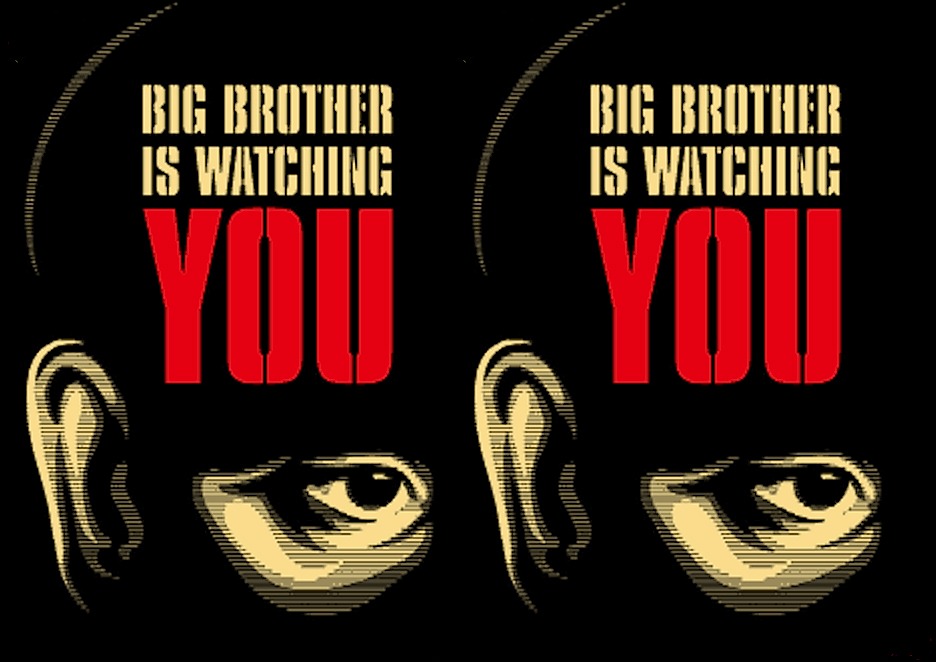Written By: Shawn Setaro from Rap Genius
Former FBI agent Tim Clemente made a series of frightening appearances on CNN in the beginning of May. He revealed that the Feds have the capability to listen to our entire electronic lives – his exact, bone-chilling words were “no digital communication is secure.”
Between this bombshell and the recent law enforcement posturing over Assata Shakur, the relationship between citizens, particularly those of color, and those folks sworn to serve and protect has been on the forefront of the public mind.
To help provide context, we at Rap Genius (and our current events arm, News Genius) have recently started annotating documents from the FBI’s infamous spying and harassment program known as COINTELPRO. The purpose of the agency was to “expose, disrupt, discredit, or otherwise neutralize” groups or individuals who dared to oppose U.S. hegemony in any meaningful way.
While there were efforts against Communists, the New Left, and independentistas, the majority of the Bureau’s wrath was reserved for the black liberation movement. To be fair, this was nothing new. They had been fighting black activists since before there even was an FBI. The Bureau of Investigation, as it was then called, made plans to get Marcus Garvey way back in 1919 – see the relevant document here.
As the civil rights movement grew, the FBI was right there with it. In 1964, they attempted to get Martin Luther King, Jr. to kill himself, and they continued their surveillance and harassment up to his death and beyond. As for Martin’s counterpart in the public imagination, Malcolm X, this 1969 memo shows the Bureau gleefully taking credit for starting the feud that would lead to his assassination.
When it came to the Black Panther Party, the FBI amazingly got even more vicious. They resorted to smearing not just group members, but even their financial supporters – see this document laying out a plan of attack against actress Jean Seberg. The plan was “successful,” though the resultant stress on the actress cost her a child and ultimately led to her suicide. The group members themselves were endlessly arrested on little or no pretext, driven into hiding or exile, and sometimes, as with Fred Hampton and Mark Clark, actually murdered.
With COINTELPRO’s 1971 exposure, the government dropped the acronym, but the thuggery otherwise continued unabated. With the black liberation movement decimated, the Feds turned their attention to other targets like the American Indian Movement and the Central American solidarity groups popular in the 1980s.
But what does all this have to do with hip-hop? Well, entertainers have long been on the FBI’s hit list. Back in the 1970s, they attacked comedian Dick Gregory and even one of the biggest stars in the world, ex-Beatle John Lennon. So it makes sense that a new generation’s icons would be in law enforcement’s crosshairs as well. This intuition proved all too accurate, as a quick look at the FBI’s voluminous files on Biggie and Tupac will indicate.
As it turned out, though, it wasn’t the Feds, but rather a different arm of law enforcement that was responsible for the current COINTELPRO-style surveillance of the hip-hop world. The NYPD, led at the time by Derrick Parker, a cop with a love of rap and a knack for self-promotion, developed a hip-hop intelligence unit in 1998. They had a secret headquarters in what Parker called “a covert-type location.” From there, they would spy on anyone affiliated with hip-hop, and officers would frequently post up outside rap world events, waiting for someone to arrest.
The “hip-hop cops” managed to remain in the realm of speculation and legend until The Miami Herald exposed the fact that the NYPD had come to town to brief local police about the dangers of rap stars. That 2004 piece blew up into national news and let everyone know that a secret police unit devoted to watching rappers wasn’t just a paranoid fantasy brought on by too much weed and repeated viewings of Scarface.
As members of the hip-hop community, it is our responsibility to look at how law enforcement helped to destroy the liberation movements of our spiritual and artistic progenitors so that we don’t fall victim to the same traps. We should also take the fact that the police are watching as a reminder of the power of hip-hop culture – we wouldn’t be so closely monitored if the powers-that-be weren’t worried. So, even though it may not seem so in an era of new Bugattis and nights at the strip club, hip-hop artists have amazing creative, political, and cultural potential. And if we forget it sometimes, the boys in blue will be right there to remind us.

